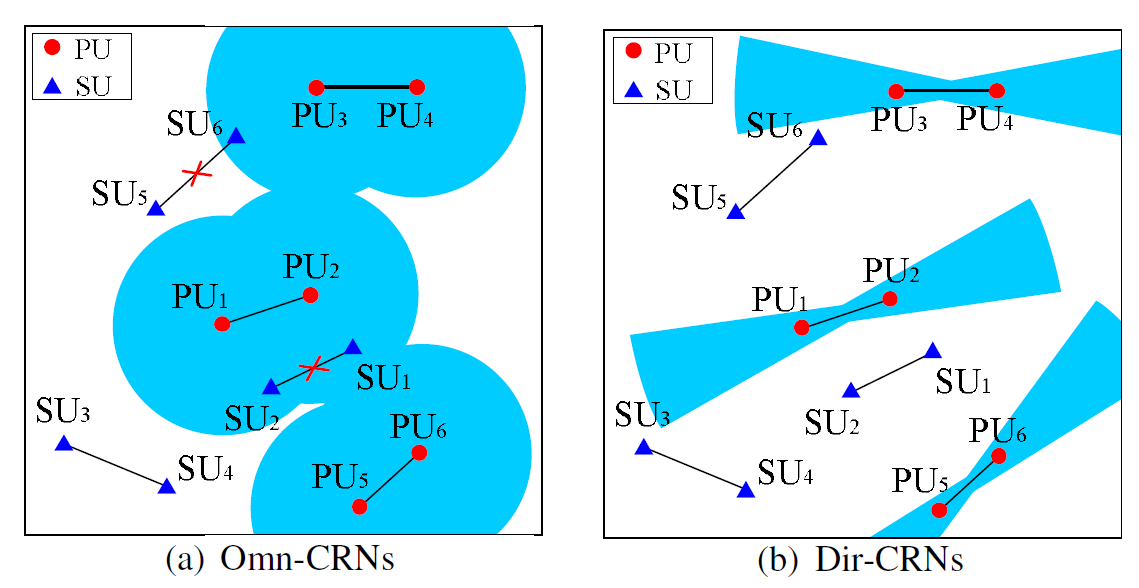Connectivity of Underlay Cognitive Radio Networks with Directional Antennas
In underlay cognitive radio networks (CRNs), the connectivity of secondary users (SUs) is difficult to be guaranteed due to the existence of primary users (PUs). Most prior studies only consider cognitive radio networks equipped with omni-directional antennas causing high interference at SUs. We name such CRNs with omni-directional antennas as Omn-CRNs. Compared with an omni-directional antenna, a directional antenna can concentrate the transmitting/receiving capability at a certain direction, consequently resulting in the less interference. In this paper, we investigate the connectivity of SUs in CRNs with directional antennas (named as Dir-CRNs). In particular, we derive closed-form expressions of the connectivity of SUs of both Dir-CRNs and Omn-CRNs, thus enabling tractability. We show that the connectivity of SUs is mainly affected by two constraints: the spectrum availability of SUs and the topological connectivity of SUs. Extensive simulations validate the accuracy of our proposed models. Meanwhile, we also show that Dir-CRNs can have higher connectivity than Omn-CRNs mainly due to the lower interference, the higher spectrum availability and the higher topological connectivity brought by directional antennas. Moreover, we also extend our analysis with consideration transmission power efficiency. The simulation results show that Dir-CRNs require less transmission power to establish links than Omn-CRNs. We further investigate the throughput capacity of SUs, which is shown to heavily depend on the connectivity of SUs.


Leave a Reply